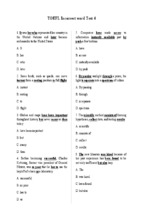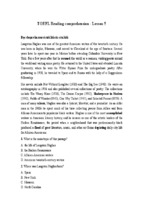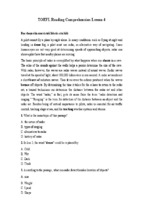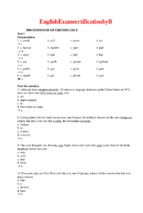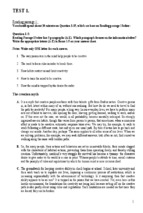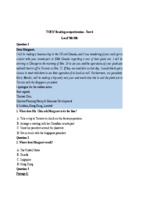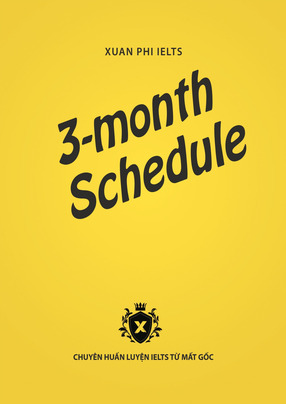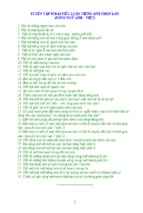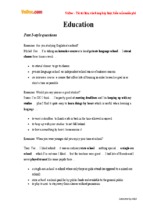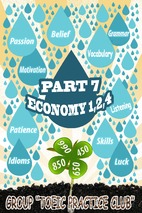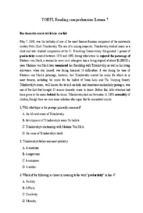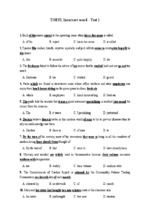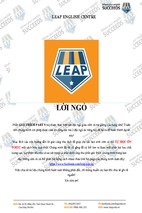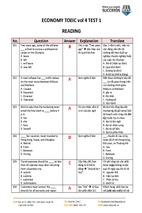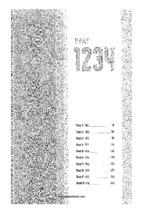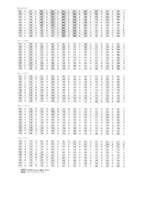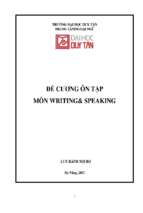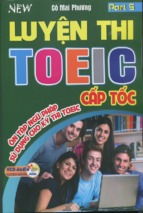Peterson’s
MASTER
TOEFL
WRITING SKILLS
About Peterson’s, a Nelnet company
Peterson’s (www.petersons.com) is a leading provider of education information and advice, with books and online
resources focusing on education search, test preparation, and financial aid. Its Web site offers searchable databases and
interactive tools for contacting educational institutions, online practice tests and instruction, and planning tools for
securing financial aid. Peterson’s serves 110 million education consumers annually.
For more information, contact Peterson’s, 2000 Lenox Drive, Lawrenceville, NJ 08648;
800-338-3282; or find us on the World Wide Web at www.petersons.com/about.
© 2007 Peterson’s, a Nelnet company
Previously published as Grammar Workbook for the TOEFL Exam © 1971, 1974, 1976,
1978, 1980, 1985, 1989, 1992, 1994, 1996, 1998
Editor: Wallie Walker Hammond; Production Editor: Linda Seghers; Manufacturing
Manager: Raymond Golaszewski; Composition Manager: Gary Rozmierski
ALL RIGHTS RESERVED. No part of this work covered by the copyright herein may be
reproduced or used in any form or by any means—graphic, electronic, or mechanical,
including photocopying, recording, taping, Web distribution, or information storage and
retrieval systems—without the prior written permission of the publisher.
ISBN-13: 978-0-7689-2329-2
ISBN-10: 0-7689-2329-8
Printed in the United States of America
10
9
8
7
First Edition
6
5
4
3
2
1
08
07
06
Petersons.com/publishing
Check out our Web site at www.petersons.com/publishing to see if there is any new information
regarding the tests and any revisions or corrections to the content of this book. We’ve made sure the
information in this book is accurate and up-to-date; however, the test format or content may have
changed since the time of publication.
OTHER TITLES IN SERIES
Peterson’s Master TOEFL Reading Skills
Peterson’s Master TOEFL Vocabulary
Contents
...............................................................................
Before You Begin . . . . . . . . . . . . . . . . . . . . . . . . . . . . . . . . .
How This Book Is Organized . . . . . . . . . . . . . . . . . . . . . . . . . .
Special Study Features . . . . . . . . . . . . . . . . . . . . . . . . . . . . . . . .
You’re Well on Your Way to Success . . . . . . . . . . . . . . . . . . .
Give Us Your Feedback . . . . . . . . . . . . . . . . . . . . . . . . . . . . . . .
Top 10 Strategies to Raise Your Score . . . . . . . . . . . . . . . . . .
Abbreviations . . . . . . . . . . . . . . . . . . . . . . . . . . . . . . . . . . . . . . . .
ix
ix
ix
x
x
xi
xii
PART I: TOEFL WRITING BASICS
1
All About TOEFL Writing . . . . . . . . . . . . . . . . . . . . . . . . . .
The TOEFL Essay . . . . . . . . . . . . . . . . . . . . . . . . . . . . . . . . . . . .
The Integrated Writing Task of the TOEFL iBT . . . . . . . . . . .
Summing It Up . . . . . . . . . . . . . . . . . . . . . . . . . . . . . . . . . . . . . .
3
3
8
9
PART II: DIAGNOSING STRENGTHS AND
WEAKNESSES
2
Practice Test 1: Diagnostic . . . . . . . . . . . . . . . . . . . . . . . . 15
Answer Key and Explanations . . . . . . . . . . . . . . . . . . . . . . . . . 20
PART III: TOEFL WRITING REVIEW
3
Modifiers . . . . . . . . . . . . . . . . . . . . . . . . . . . . . . . . . . . . . . . . . 27
Adverbs Like Only . . . . . . . . . . . . . . . . . . . . . . . . . . . . . . . . . . . 28
Split Infinitives . . . . . . . . . . . . . . . . . . . . . . . . . . . . . . . . . . . . . . 29
Dangling Modifiers . . . . . . . . . . . . . . . . . . . . . . . . . . . . . . . . . . . 30
Adjective/Adverb Confusion . . . . . . . . . . . . . . . . . . . . . . . . . . . 32
Adjectives after Verbs of Sensation . . . . . . . . . . . . . . . . . . . . . 34
Noun Adjectives . . . . . . . . . . . . . . . . . . . . . . . . . . . . . . . . . . . . . 35
Hyphenated or Compound Adjectives . . . . . . . . . . . . . . . . . . 37
Demonstratives . . . . . . . . . . . . . . . . . . . . . . . . . . . . . . . . . . . . . . 38
Few, Little, Much, and Many . . . . . . . . . . . . . . . . . . . . . . . . . . 39
Cardinal and Ordinal Numbers . . . . . . . . . . . . . . . . . . . . . . . . 42
vi
Contents
.................................................................
............................................................................................
4
Sameness and Similarity . . . . . . . . . . . . . . . . . . . . . . . . . . . . . . . . . . . . . . . . . .
Comparatives . . . . . . . . . . . . . . . . . . . . . . . . . . . . . . . . . . . . . . . . . . . . . . . . . . .
Superlatives . . . . . . . . . . . . . . . . . . . . . . . . . . . . . . . . . . . . . . . . . . . . . . . . . . . . .
Cause and Result . . . . . . . . . . . . . . . . . . . . . . . . . . . . . . . . . . . . . . . . . . . . . . . .
Articles . . . . . . . . . . . . . . . . . . . . . . . . . . . . . . . . . . . . . . . . . . . . . . . . . . . . . . . .
Too, Very, and Enough . . . . . . . . . . . . . . . . . . . . . . . . . . . . . . . . . . . . . . . . . . .
Negation . . . . . . . . . . . . . . . . . . . . . . . . . . . . . . . . . . . . . . . . . . . . . . . . . . . . . . .
Exercises: Modifiers . . . . . . . . . . . . . . . . . . . . . . . . . . . . . . . . . . . . . . . . . . . . . .
Answer Key and Explanations. . . . . . . . . . . . . . . . . . . . . . . . . . . . . . . . . . . . . .
Summing It Up . . . . . . . . . . . . . . . . . . . . . . . . . . . . . . . . . . . . . . . . . . . . . . . . . .
44
46
48
50
53
55
57
61
64
65
Verbs . . . . . . . . . . . . . . . . . . . . . . . . . . . . . . . . . . . . . . . . . . . . . . . . . . . . . . . . . 67
Tense . . . . . . . . . . . . . . . . . . . . . . . . . . . . . . . . . . . . . . . . . . . . . . . . . . . . . . . . . .
Time Clauses . . . . . . . . . . . . . . . . . . . . . . . . . . . . . . . . . . . . . . . . . . . . . . . . . . .
Verbs of “Demand” . . . . . . . . . . . . . . . . . . . . . . . . . . . . . . . . . . . . . . . . . . . . . .
Wishes . . . . . . . . . . . . . . . . . . . . . . . . . . . . . . . . . . . . . . . . . . . . . . . . . . . . . . . . .
Conditionals . . . . . . . . . . . . . . . . . . . . . . . . . . . . . . . . . . . . . . . . . . . . . . . . . . . .
Modals . . . . . . . . . . . . . . . . . . . . . . . . . . . . . . . . . . . . . . . . . . . . . . . . . . . . . . . . .
Verbals . . . . . . . . . . . . . . . . . . . . . . . . . . . . . . . . . . . . . . . . . . . . . . . . . . . . . . . . .
Past Participles . . . . . . . . . . . . . . . . . . . . . . . . . . . . . . . . . . . . . . . . . . . . . . . . . .
Present and Perfect Participles and Infinitives . . . . . . . . . . . . . . . . . . . . . . . .
Exercises: Verbs . . . . . . . . . . . . . . . . . . . . . . . . . . . . . . . . . . . . . . . . . . . . . . . . .
Answer Key and Explanations. . . . . . . . . . . . . . . . . . . . . . . . . . . . . . . . . . . . . .
Summing It Up . . . . . . . . . . . . . . . . . . . . . . . . . . . . . . . . . . . . . . . . . . . . . . . . . .
67
69
70
71
73
75
77
81
84
86
88
89
5
Pronouns . . . . . . . . . . . . . . . . . . . . . . . . . . . . . . . . . . . . . . . . . . . . . . . . . . . . .
Relative Pronouns . . . . . . . . . . . . . . . . . . . . . . . . . . . . . . . . . . . . . . . . . . . . . . .
Personal Pronouns—Case . . . . . . . . . . . . . . . . . . . . . . . . . . . . . . . . . . . . . . . . .
Who/Whom . . . . . . . . . . . . . . . . . . . . . . . . . . . . . . . . . . . . . . . . . . . . . . . . . . . .
Possessives . . . . . . . . . . . . . . . . . . . . . . . . . . . . . . . . . . . . . . . . . . . . . . . . . . . . .
Faulty Reference . . . . . . . . . . . . . . . . . . . . . . . . . . . . . . . . . . . . . . . . . . . . . . . .
Person . . . . . . . . . . . . . . . . . . . . . . . . . . . . . . . . . . . . . . . . . . . . . . . . . . . . . . . . .
Number . . . . . . . . . . . . . . . . . . . . . . . . . . . . . . . . . . . . . . . . . . . . . . . . . . . . . . . .
Those Modified . . . . . . . . . . . . . . . . . . . . . . . . . . . . . . . . . . . . . . . . . . . . . . . . . .
Exercises: Pronouns . . . . . . . . . . . . . . . . . . . . . . . . . . . . . . . . . . . . . . . . . . . . . .
Answers and Explanations . . . . . . . . . . . . . . . . . . . . . . . . . . . . . . . . . . . . . . . . .
Summing It Up . . . . . . . . . . . . . . . . . . . . . . . . . . . . . . . . . . . . . . . . . . . . . . . . . .
91
91
93
95
98
100
102
104
107
108
109
110
6
Basic Patterns . . . . . . . . . . . . . . . . . . . . . . . . . . . . . . . . . . . . . . . . . . . . . . . . 111
Indirect Objects . . . . . . . . . . . . . . . . . . . . . . . . . . . . . . . . . . . . . . . . . . . . . . . . . 111
Order of Adverbs . . . . . . . . . . . . . . . . . . . . . . . . . . . . . . . . . . . . . . . . . . . . . . . . 113
Embedded Questions . . . . . . . . . . . . . . . . . . . . . . . . . . . . . . . . . . . . . . . . . . . . . 116
To/For (Purpose) . . . . . . . . . . . . . . . . . . . . . . . . . . . . . . . . . . . . . . . . . . . . . . . . 118
Double Subjects . . . . . . . . . . . . . . . . . . . . . . . . . . . . . . . . . . . . . . . . . . . . . . . . . 120
Clauses . . . . . . . . . . . . . . . . . . . . . . . . . . . . . . . . . . . . . . . . . . . . . . . . . . . . . . . . 121
Exercises: Basic Patterns . . . . . . . . . . . . . . . . . . . . . . . . . . . . . . . . . . . . . . . . . . 125
www.petersons.com
Contents
vii
.................................................................
7
Style . . . . . . . . . . . . . . . . . . . . . . . . . . . . . . . . . . . . . . . . . . . . . . . . . . . . . . . . . . 129
Voice . . . . . . . . . . . . . . . . . . . . . . . . . . . . . . . . . . . . . . . . . . . . . . . . . . . . . . . . . . 129
Parallelism . . . . . . . . . . . . . . . . . . . . . . . . . . . . . . . . . . . . . . . . . . . . . . . . . . . . . . 133
Wordiness . . . . . . . . . . . . . . . . . . . . . . . . . . . . . . . . . . . . . . . . . . . . . . . . . . . . . . 136
Substandard . . . . . . . . . . . . . . . . . . . . . . . . . . . . . . . . . . . . . . . . . . . . . . . . . . . . 139
Usage . . . . . . . . . . . . . . . . . . . . . . . . . . . . . . . . . . . . . . . . . . . . . . . . . . . . . . . . . . 142
Words Often Confused, Group I . . . . . . . . . . . . . . . . . . . . . . . . . . . . . . . . . . . 146
Words Often Confused, Group II . . . . . . . . . . . . . . . . . . . . . . . . . . . . . . . . . . 150
Words Often Confused, Group III . . . . . . . . . . . . . . . . . . . . . . . . . . . . . . . . . . 154
Correlative Conjunctions . . . . . . . . . . . . . . . . . . . . . . . . . . . . . . . . . . . . . . . . . 157
Subject/Verb Agreement . . . . . . . . . . . . . . . . . . . . . . . . . . . . . . . . . . . . . . . . . . 159
Parts of Speech . . . . . . . . . . . . . . . . . . . . . . . . . . . . . . . . . . . . . . . . . . . . . . . . . 162
Prepositions (General Use) . . . . . . . . . . . . . . . . . . . . . . . . . . . . . . . . . . . . . . . . 164
Prepositions in Combinations . . . . . . . . . . . . . . . . . . . . . . . . . . . . . . . . . . . . . 167
Exercises: Style . . . . . . . . . . . . . . . . . . . . . . . . . . . . . . . . . . . . . . . . . . . . . . . . . . 171
Answer Key and Explanations. . . . . . . . . . . . . . . . . . . . . . . . . . . . . . . . . . . . . . 174
Summing It Up . . . . . . . . . . . . . . . . . . . . . . . . . . . . . . . . . . . . . . . . . . . . . . . . . . 176
PART IV: THREE PRACTICE TESTS
Practice Test 2 . . . . . . . . . . . . . . . . . . . . . . . . . . . . . . . . . . . . . . . . . . . . . . . . 181
Answer Key and Explanations . . . . . . . . . . . . . . . . . . . . . . . . . . . . . . . . . . . . . 185
Practice Test 3 . . . . . . . . . . . . . . . . . . . . . . . . . . . . . . . . . . . . . . . . . . . . . . . . 189
Answer Key and Explanations . . . . . . . . . . . . . . . . . . . . . . . . . . . . . . . . . . . . . 193
Practice Test 4 . . . . . . . . . . . . . . . . . . . . . . . . . . . . . . . . . . . . . . . . . . . . . . . . 197
Answer Key and Explanations . . . . . . . . . . . . . . . . . . . . . . . . . . . . . . . . . . . . . 201
www.petersons.com
............................................................................................
Answer Key and Explanations. . . . . . . . . . . . . . . . . . . . . . . . . . . . . . . . . . . . . . 127
Summing It Up . . . . . . . . . . . . . . . . . . . . . . . . . . . . . . . . . . . . . . . . . . . . . . . . . . 128
Before You Begin
...............................................................................
HOW THIS BOOK IS ORGANIZED
If you are preparing for any version of the TOEFL, you are not alone. Almost
a million people all over the world took the TOEFL last year. A high score on
this test is an essential step in being admitted to graduate or undergraduate
programs at almost all colleges and universities in North America. But
preparing for this test can be a difficult, often frustrating experience.
Peterson’s Master TOEFL Writing Skills, used as a self-tutor, will help you
improve your writing skills.
•
Top 10 Strategies to Raise Your Score gives you test-taking strategies.
•
Part I includes basic information about the TOEFL writing section.
•
Part II provides a diagnostic test to determine your strengths and
weaknesses.
•
Part III provides the basic grammar and writing review. The exercises
progress from relatively simple to relatively difficult as you continue
through the book. Various skills, such as error identification and writing
style, are reviewed.
•
Part IV includes three additional practice writing tests. They will show
you how well you have mastered the writing skills presented in this book.
SPECIAL STUDY FEATURES
Peterson’s Master TOEFL Writing Skills is designed to be user-friendly. To this
end, it includes features to make your preparation much more efficient.
Overview
The review chapter begins with a bulleted overview, listing the topics to be
covered in the chapter. This will allow you to quickly target the areas in which
you are most interested.
ix
x
Before You Begin
.................................................................
............................................................................................
Summing It Up
The review chapter ends with a point-by-point summary that captures the most important
concepts. They are a convenient way to review the chapter’s key points.
Bonus Information
Look in the page margins of your book for the following test prep tool:
NOTE
Notes highlight critical information about a concept in the review section. These notes will
provide you with additional study tools.
YOU’RE WELL ON YOUR WAY TO SUCCESS
Remember that knowledge is power. By using Peterson’s Master TOEFL Writing Skills as a
supplement to your other TOEFL test preparation, you will fine-tune your writing skills and
abilities.
GIVE US YOUR FEEDBACK
Peterson’s publishes a full line of resources to help guide you and your family through the
college admission process.
We welcome any comments or suggestions you may have about this publication and invite you
to complete our online survey at www.petersons.com/booksurvey. Or you can fill out the
survey at the back of this book, tear it out, and mail it to us at:
Publishing Department
Peterson’s
2000 Lenox Drive
Lawrenceville, NJ 08648
Your feedback will help us to provide personalized solutions for your educational
advancement.
www.petersons.com
Before You Begin
xi
.................................................................
1.
As with other sections of the TOEFL, be familiar with the directions and
examples so you can begin work immediately.
2.
Come up with a plan. Make sure your essay has an introduction, a body, and
a conclusion.
3.
Brainstorm for 3 to 5 minutes. Write down words and phrases that are
related to your topic.
4.
Write simple sentences to help you put your ideas into a complete form.
5.
Order your ideas in a logical pattern to support your thesis.
6.
Use specific, detailed examples from your thoughts to develop your ideas.
7.
Choose effective words and include transitional words and phrases to
unify your work.
8.
Set aside 2–4 minutes for revising, editing, and proofreading. Make sure
everything you included says what you mean.
9.
Make sure you have written about the given prompt only and that you
have answered the question completely.
10.
Concentration is another important factor. Your practice and hard work
will help you.
www.petersons.com
............................................................................................
TOP 10 STRATEGIES TO RAISE YOUR SCORE
xii
Before You Begin
.................................................................
............................................................................................
ABBREVIATIONS
The following is a list of the abbreviations used in the review sections of this book.
adj.
adjective
adv.
adverb
aux.
auxiliary
cl.
clause
CN
count noun
comp.
comparative
conj.
conjunction
d.o.
direct object
fut.
future
infin. (or to 1 V)
infinitive
i.o.
indirect object
irr.
irregular
n
noun
ncn
non-count noun
neg.
negative
obj.
object
part.
participle
past part.
past participle
past perf.
past perfect
perf. part.
perfect participle
pl.
plural
prep.
preposition
pres.
present
pron.
pronoun
qw
question word
s
subject
sing.
singular
suprl.
superlative
to 1 have 1 past part.
perfect infinitive
to 1 v (or infin.)
infinitive
v
simple form of the verb
v 1 ing
present participle or gerund
www.petersons.com
P ART I
.........................................................
TOEFL WRITING BASICS
.....................................................................
CHAPTER 1
All About TOEFL Writing
All About TOEFL Writing
...............................................................................
•
The TOEFL essay
•
The independent writing task of the TOEFL ibt
•
Summing it up
THE TOEFL ESSAY
An essay is a short literary composition on a single subject that usually
presents the personal view of the author—you. In the fourth and last section
of the TOEFL, you will write an essay about a topic that will be assigned to
you. You will have 30 minutes to write a three- to five-paragraph essay on that
topic. You must write on the topic you are assigned. An essay on any topic
other than the one assigned will receive a score of “0.”
Before the topic is presented, you must choose whether to type your essay on
the computer or to hand write your essay on the paper essay answer sheet
provided. Scratch paper will be given to you for making notes. For the
paper-based TOEFL, the final version must be on the single-page, two-sided
essay answer sheet. For the CBT or iBT version of the TOEFL, you will
compose the final version of your essay in the “essay box” on the computer
screen. The essay topic will be presented to you on the computer screen.
You will not know the topic ahead of time. Although you must write only on
the topic that is assigned to you, there is a way to prepare for this section.
Your essay score will depend upon your ability to compose a well-written essay
that answers the question in a relatively short period of time—in this case, 30
minutes. Your essay must be well organized and well developed; you must
provide the reader with clearly appropriate details to support your thesis or
illustrate your ideas. Your writing should show, throughout the essay, that
you’re comfortable expressing complex ideas in the English language. You
should also use a variety of grammatical structures (clauses, tenses, etc.) and
use a vocabulary that is appropriate to your topic.
3
chapter 1
OVERVIEW
4
PART I: TOEFL Writing Basics
.................................................................
............................................................................................
Preparing Your First Version of the Essay
THE PLAN
Writing is a process, like a recipe for a special meal. You have a good chance of succeeding as
an essayist if you follow these directions. The first step in the writing process is to have a
plan.
An essay should have:
•
an introduction,
•
a body, and
•
a conclusion.
In the introduction, you get the reader’s attention and tell the reader what you are going to
write about. You also give the reader any special information that guides the reader to the
body of your essay. In the case of a TOEFL essay, the introduction should be one paragraph
that contains four to five sentences.
The body of the essay should be made up of one to three paragraphs that contain the ideas you
want to communicate to the reader.
The conclusion, which should be one paragraph, summarizes what you wrote in the body and
reveals the conclusion you want the reader to make.
Do not write the essay without planning. Begin the process by “brainstorming.”
BRAINSTORMING
In all writing classes, there is an exercise called brainstorming, which helps you start the flow
of ideas necessary for an essay. This process involves writing words and phrases that are
related to your topic as they come into your head. For example, look at the following topic:
What are some of the qualities of a good parent? Use specific details and examples
to explain your answer.
Depending on your beliefs, you might write down the following words while brainstorming:
Strength of character
Love of family life
Earn a living
Spends time with children
Set an example
Help children with emotional problems in adolescence
www.petersons.com
Chapter 1: All About TOEFL Writing
5
.................................................................
These are simple sentences that help you put ideas into complete form, but the sentences are
in no way the final version that you will submit.
You might come up with sentences such as:
•
A parent should earn money to provide food, clothing, and shelter for his or her
family.
•
A parent should not work so many hours that he or she ignores the family.
•
Parents should show affection to their children, hugging and being affectionate with
them as their culture calls for.
•
Parents should encourage their children to study in school by setting the example of
working hard at their jobs and at home.
Writing these sentences should take you about 5 minutes.
LOGICAL ORDER
After you have written your sentences, put them into a logical order. That is, arrange the
order of sentences so that they relate to one another in a logical sequence. Then, decide which
sentences should go into the introduction, the body, and the conclusion. You will probably find
that you need more sentences. If so, write them at this time, and place them in the
appropriate paragraphs in the appropriate section of the essay. Do not spend too much time
writing the sentences. In the margins next to the sentences, write numbers that will indicate
the proper order of the sentences. This should take 3 to 5 minutes.
WRITE TOPIC SENTENCES FOR ALL THE PARAGRAPHS IN YOUR ESSAY
A topic sentence contains the controlling idea of a paragraph and tells the reader what the
paragraph is about. Look at your sentences and decide which one should begin the
introductory paragraph, which ones should begin the paragraphs in the body, and which one
should begin the conclusion. You may have already written some topic sentences. If not, write
those that are needed. This should take you about 5 minutes.
WRITE THE ESSAY
You now have 10 minutes to put the essay into final shape. You have all the ideas, sentences,
and paragraphs in the correct order, but you need to check your sentences for grammar and
spelling errors. Then, following the numbers in your margin, write your sentences in the
correct order in the final draft.
www.petersons.com
............................................................................................
WRITE SENTENCES ABOUT WHAT YOU BRAINSTORM
6
PART I: TOEFL Writing Basics
.................................................................
............................................................................................
Write About One Choice
You now have a process to write the essay, but there are rules that you should follow when
looking at your assigned topic. There are 185 possible topics for the essay, but there are only
four ways that the topic is stated. If you learn to recognize the kind of topic that you have been
assigned, you will be able to organize your writing more efficiently.
Most essay topics ask you to make a choice. For example:
Some people prefer to eat at food stands or restaurants. Other people prefer to
prepare and eat food at home. Which do you prefer? Use specific reasons and
examples to support your answer.
You probably enjoy eating in restaurants and at home, depending on your mood, your work
schedule, or your diet. However, do not write an essay that says that sometimes you like
eating in a restaurant and sometimes at home. You must choose one or the other if you want
to write an essay that answers the question correctly.
Other topics ask you whether you agree or disagree with a statement. Others will ask you to
tell which is better or whether you support one thing or another. These topics require you to
choose only one thing and write about it. Do not write about both.
One kind of topic can easily deceive you. Read the following:
Nowadays, food has become easier to prepare. Has this change improved the way
people live? Use specific reasons and examples to support your answer.
This topic asks you to make a choice, but it may not be obvious. It is not about food. It’s about
the way food preparation affects the way people live. You have to choose between two possible
opinions. Opinion one is “The change in food preparation has improved the way people live.”
The other is “The change has not improved the way people live.” Make sure your essay covers
the right topic.
SINGLE TOPICS
There are some types of questions that ask you to choose the topic yourself. These topics are
often referred to as “desert island questions.” For example:
If you had to live on a desert island and could have only one book to read, what
would it be? Explain your answer, using specific reasons and details.
The topic question gives you the circumstances of your choice, but it leaves the choice of the
details of your answer up to you. A more likely topic is as follows:
If you could study a subject that you have never had the opportunity to study, what
would you choose? Explain your choice, using specific reasons and details.
www.petersons.com
Chapter 1: All About TOEFL Writing
7
.................................................................
academic subject, not necessarily one that you always wanted to study, but also one that
might have helped you in a particular way or one that your parents would have been pleased
about. Whatever subject you write about, you must provide details about your desires or those
of your parents. Or, you could write about the way the course would have helped your work.
CAUSE AND EFFECT TOPICS
Some topics require you to identify causes, effects, and causes and effects together. Look at
the following example:
How do movies or television influence people’s behavior? Use reasons and specific
examples to support your answer.
In this example, the statement gives you the cause, “movies or television.” It is your job to
write about the effect of these media on people’s behavior.
In the following example, the statement gives you the effect:
Why do you think some people are attracted to dangerous sports or other dangerous
activities? Use specific reasons and examples to support your answer.
The effect is “some people are attracted to dangerous sports or other dangerous activities.”
You must write about the causes of this attraction.
In the following example, you are required to write about both cause and effect:
People do many different things to stay healthy. What do you do for good health?
Use specific reasons and examples to support your answer.
You must write about what you do for good health, which is the cause. You must also write
about the effect of what you do.
“MANY THINGS” TOPICS
Topics often require you to report several facts. For example:
Films can tell us a lot about the country where they were made. What have you
learned about a country from watching its movies? Use specific examples and
details to support your response.
To write this essay, you have to choose a film from a country other than your own—a film that
is about the country that produced it. You have to say what you learned about that country
from watching its movies. If the movies had been Francis Ford Coppola’s The Godfather, Parts
1, 2, and 3, what would you have learned about America? About Italian immigrants in
America? About Italian-American actors? About the causes of organized crime in America?
www.petersons.com
............................................................................................
Here is the desert island question in a slightly different form. You have to write about one
8
PART I: TOEFL Writing Basics
.................................................................
............................................................................................
About family life, religion, and divorce? About political and economic power? Let’s look at the
next example:
People listen to music for different reasons and at different times. Why is music
important to many people? Use specific reasons and examples to support your choice.
This topic has been the subject of magazine articles, long books, and even encyclopedias. You
must write not about the kinds of music found throughout the world but about the reasons
that people listen to it, e.g., relaxation, religious devotion, or artistic engagement. Before you
begin writing your essay, make sure you are focusing on the correct idea.
CLASSIFYING THE TOPICS
In the TOEFL Bulletin, there is a list of 185 topics from which your assigned topic will be
chosen. You should become familiar with this list and take extra time to practice writing
essays before you take the computer-based TOEFL test.
To see a list of possible assigned topics, go to www.toefl.org and download the entire list. To
help yourself become familiar with the topics, try to break them down into categories such as
the following:
Going to College
Work
Going to Elementary and High School
Spending Money
Parents and Children
Travel and Transportation
Food
Technology
New Things in Your Life
Society
The Media
The Culture of Your Country
Personal Preferences
Ecology
Your Beliefs
Sports and Recreation
Using the steps you learned here, practice writing on a variety of these topics from each of the
categories. There is no way to memorize an essay or all of the questions, but you can become
more comfortable with the types of questions and the process of writing an essay under timed
conditions.
THE INTEGRATED WRITING TASK OF THE TOEFL iBT
On the TOEFL iBT, you will read a passage and then hear a lecture that is related to the topic
of the passage. You will be asked to summarize the listening passage and explain how it
relates to the points in the reading passage. The suggested length of your written response is
between 150 and 225 words. You must remember to make sure that your response clearly
relates to the question posed. This is not a writing exercise that asks for your opinion. Also
remember that you are being asked to explain the points you’ve heard.
www.petersons.com
- Xem thêm -

